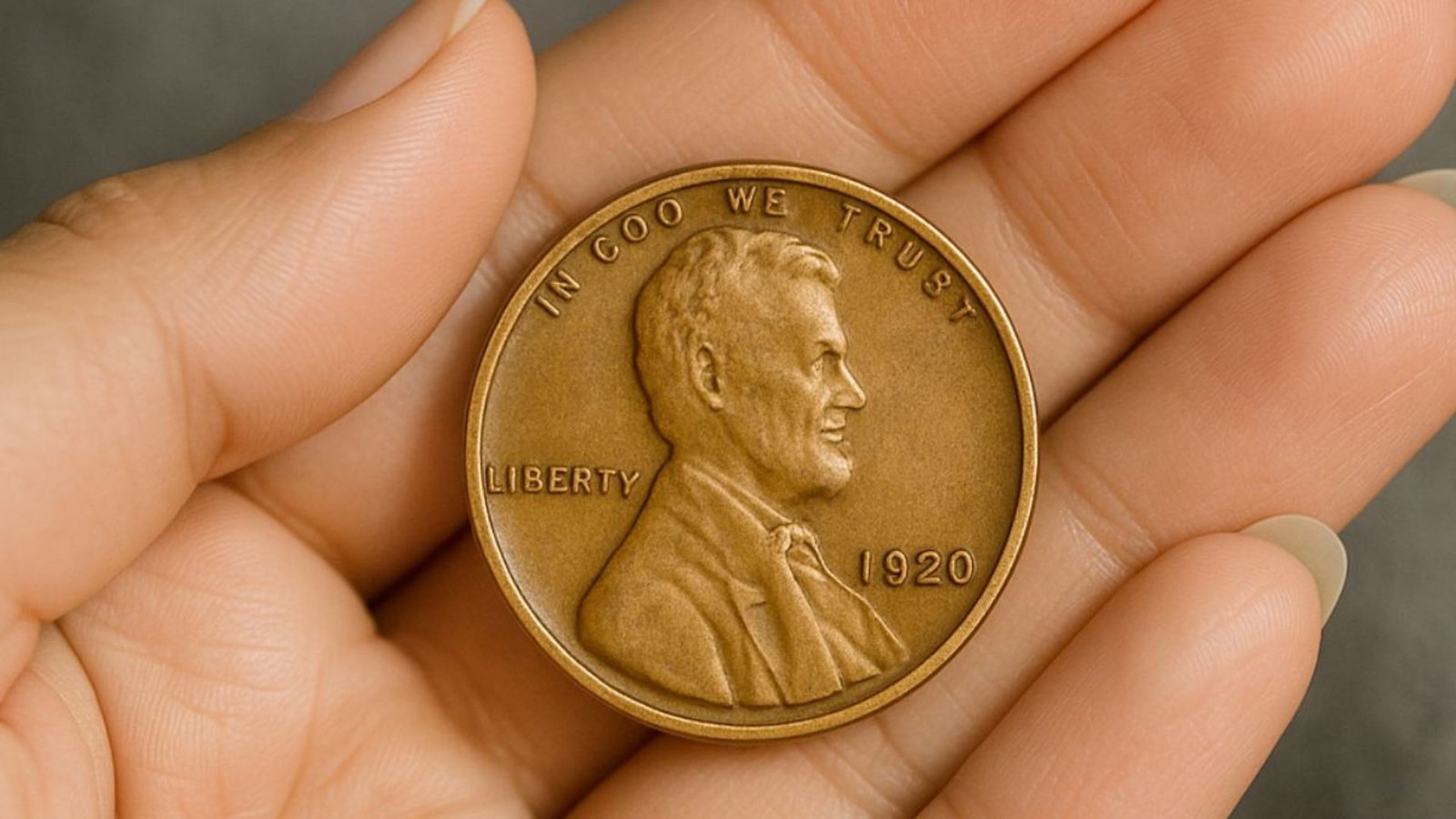Have you ever stopped to look at the pennies jingling in your pocket or sitting forgotten in a jar on your shelf? Most people toss them aside without a second thought. But what if one of those tiny copper coins could change your life forever? Imagine holding a Lincoln Wheat Penny worth $3.6 million – and the best part? It’s believed to still be out there, circulating among everyday change. This isn’t some fairy tale; it’s a real piece of American history waiting to be discovered.
In this in-depth guide, we’ll dive into the fascinating story behind the Lincoln Wheat Penny, uncover why certain ones skyrocket to insane values like $3.6 million, and show you exactly how to spot a potential fortune in your spare change. Whether you’re a coin collector (or numismatist, as experts call them) or just someone who loves a good treasure hunt, this article will arm you with the knowledge to turn pocket lint into payday. Stick around – you might just find that Lincoln Wheat Penny value bomb in your couch cushions!
What is the Lincoln Wheat Penny? A Quick History Lesson
The Lincoln Wheat Penny is one of the most iconic coins in U.S. history. Minted from 1909 to 1958, it’s a small, one-cent piece that honors President Abraham Lincoln. Unlike earlier pennies, this was the first U.S. circulating coin to feature a real person’s face – breaking tradition and sparking a bit of controversy at the time.
The Birth of a Coin Legend: Why Lincoln’s Face?
It all started in 1908 when the U.S. Mint wanted to celebrate the 100th anniversary of Abraham Lincoln’s birth. Lincoln, the 16th president famous for leading the country through the Civil War and ending slavery with the Emancipation Proclamation, was a perfect hero for the coin. The Mint hired talented sculptor Victor David Brenner to design it. Brenner, an immigrant from Lithuania, had already made a name for himself with medals and sculptures.
Brenner’s design was simple yet powerful:
- Front (Obverse): Shows Lincoln’s profile facing right, with the words “IN GOD WE TRUST” above and “LIBERTY” to the right of his head. The year is at the bottom.
- Back (Reverse): Features two stalks of wheat framing the words “ONE CENT” and “UNITED STATES OF AMERICA.” The wheat symbolized prosperity and growth for farmers – a nod to America’s agricultural roots. “E PLURIBUS UNUM” (Latin for “Out of many, one”) arches at the top.
Early versions included Brenner’s initials “V.D.B.” on the back, but people complained it looked like advertising. The Mint removed them in 1910, then quietly added tiny “VDB” letters back on the front in 1918, near Lincoln’s shoulder. This drama added to the coin’s charm and collectibility.
Over its 50-year run, billions of Lincoln Wheat Pennies were made at three mints:
- Philadelphia (no mint mark)
- Denver (D mark)
- San Francisco (S mark)
Most were struck from 95% copper, making them reddish-brown. But during World War II, things got interesting – more on that later.
From Everyday Change to Collector’s Dream
Back in the day, these pennies were just pocket money. Kids saved them for candy, adults used them for vending machines. But as fewer were made in later years, and with the rise of coin collecting in the mid-20th century, their value exploded. Today, a worn Lincoln Wheat Penny might fetch just a few cents, but rare ones? They can make headlines – and millionaires.
The Lincoln Wheat Penny Valued at $3.6 Million: The Wartime Mistake That Created a Fortune
Now, let’s get to the juicy part: that jaw-dropping $3.6 million valuation. The coin in question is the ultra-rare 1943 Bronze Lincoln Wheat Penny. Why is it worth a small fortune? It boils down to a massive minting error during one of America’s darkest times.
World War II and the Penny Shortage
In 1942, the U.S. was deep in World War II. Copper, the main metal in pennies, was desperately needed for bullets, wires, and tanks. To save it, the Mint switched to zinc-coated steel for 1943 pennies. These “steelies” were silver-gray and magnetic – a quick way to tell them apart from normal copper ones. Over 1 billion steel pennies were made that year.
But here’s where history gets wild: A few planchets (the blank metal discs used to stamp coins) from 1942’s copper supply slipped through. By mistake, the Mint struck about 20 to 40 of these on bronze (95% copper) instead of steel. It was a tiny oversight in a huge operation, but it created some of the rarest U.S. coins ever.
- Philadelphia Mint: Around 20 known
- Denver Mint (1943-D): About 15 known
- San Francisco Mint (1943-S): Roughly 5-10 known
These survivors are like needles in a haystack. One 1943-D Bronze Penny sold for $1.7 million in 2010. Adjusted for inflation and market trends, top-condition examples now appraise at up to $3.6 million or more. Experts believe a few might still be circulating – passed hand-to-hand, unnoticed for 80+ years!
Why So Valuable? Rarity, Condition, and History
Value in coins isn’t just about age; it’s a mix of factors:
- Rarity: Fewer than 50 known worldwide.
- Condition (Grade): Coins are graded 1-70 by services like PCGS or NGC. A “MS-65” (Mint State, near-perfect) can double the price.
- Provenance: If it has a famous history, like being owned by a celebrity, it adds premium.
- Historical Tie: This penny screams WWII story – a symbol of human error amid national sacrifice.
Imagine the thrill: A grandma finds one in an old purse, or a kid spots it in arcade change. That’s happened before!
Top Valuable Lincoln Wheat Pennies to Hunt For – Beyond the $3.6 Million Gem
Not every Lincoln Wheat Penny is a millionaire-maker, but many are worth hundreds or thousands. Here’s a rundown of key dates and errors. We’ve put them in a handy table for easy reference. (Values are estimates for uncirculated or high-grade coins as of 2025 – prices fluctuate, so check current auctions!)
| Year & Variety | Mint Mark | Rarity Notes | Estimated Value Range | Why It’s Special |
|---|---|---|---|---|
| 1909-S VDB | S | Only 484,000 minted; designer’s initials controversy | $1,500 – $150,000 | First year with VDB initials; low mintage |
| 1914-D | D | Just 1.2 million made; die wear makes many low quality | $150 – $25,000 | Extremely low survival rate in good condition |
| 1922 No D | (Plain) | Mint mark “greased off” during striking; ~500,000 affected | $500 – $10,000 | Famous minting error; looks like no Denver mark |
| 1931-S | S | Great Depression low mintage: 866,000 | $60 – $5,000 | Economic hardship led to few coins produced |
| 1943 Bronze | D or S | WWII error; 20-40 known total | $100,000 – $3.6 Million | The star of our story – copper instead of steel! |
| 1955 Doubled Die | (Plain) | Obvious doubling on date and letters; ~20,000-40,000 made | $800 – $100,000 | Striking error makes text look blurry/doubled |
| 1909-S | S | First San Francisco issue; 1.8 million | $200 – $2,000 | Kickoff to the series; strong demand |
| 1926-S | S | Mintage under 4 million; many lost | $100 – $10,000 | Scarce in high grades; wheat design shines |
Table Notes: Values from PCGS Price Guide and recent Heritage Auctions. Always get professional grading – a cleaned or damaged coin loses big bucks!
Decoding Mint Marks and Errors Like a Pro
Mint marks are tiny letters under the date:
- No mark = Philadelphia
- D = Denver
- S = San Francisco
Errors? They’re goldmines. The 1955 Doubled Die looks like it was stamped twice – the “LIBERTY” and date appear fuzzy. The 1944 Steel Penny (opposite of 1943) is zinc-coated but struck on leftover steel – worth up to $500,000.
Pro Tip: Use a magnifying glass or phone app to check. And remember, don’t clean your finds – it scratches the surface and tanks the value.
How to Spot a Rare Lincoln Wheat Penny in Circulation – Your Step-by-Step Guide
Think you’ve got one? Don’t panic-sell to a pawn shop! Follow these easy steps to verify and cash in.
Step 1: Basic Inspection – What to Look For
- Material Test: For 1943 pennies, drop a magnet. Steel sticks; bronze doesn’t.
- Date Check: Focus on low-mintage years like 1909-S, 1914-D, or 1924-D.
- Visual Clues: Look for doubling, weak strikes, or off-center designs.
- Color: Original red copper is premium; brown circulated is common.
Step 2: Tools You’ll Need (Cheap and Easy)
- Magnifying loupe ($5 online)
- Coin holder flips
- Free apps like PCGS CoinFacts for photos and values
Step 3: Avoid Fakes – Common Scams
Crooks alter dates (e.g., filing a 1948 to look like 1943) or plate steel coins with copper. Red flags: Bubbly surface, wrong weight (steel is lighter), or too-perfect shine.
Step 4: Get It Graded and Sold
Take it to a certified grader like PCGS or NGC (costs $20-50). Then, auction via Heritage or eBay for max value. Stories abound of folks turning $1 face value into six figures!
Famous Finds: Real Stories of Lincoln Wheat Penny Discoveries
Nothing beats a true tale. In 2010, California man Gene Stadler found a 1943 Bronze Penny in a family collection – sold for $1.7 million! Another: A Chicago parking lot worker spotted a 1955 Doubled Die in change, netting $75,000.
These stories fuel the fire. With trillions of transactions yearly, experts say undiscovered rarities like the $3.6 million Lincoln Wheat Penny are still out there. Digital payments are rising, but cash lingers – especially in jars and tip jars.
Why Collect Lincoln Wheat Pennies? Beyond the Money
Sure, the payday is sweet, but there’s more:
- Historical Connection: Own a slice of Lincoln’s legacy and WWII grit.
- Hobby Fun: Start cheap – common ones are pennies (literally!).
- Investment Smart: Rare coins outperform stocks long-term (up 10-15% annually per PCGS).
Tips for New Collectors
- Buy certified coins first.
- Join clubs like the American Numismatic Association.
- Store in albums away from air/moisture.
The Future of the Lincoln Wheat Penny – Still Circulating in 2025?
As of October 2025, yes – Wheat Pennies pop up in 1-2% of circulated change, per coin forums. But with cash fading, now’s the time to hunt. That $3.6 million beauty? It could be in your wallet, waiting for eagle eyes.
Ready to strike gold? Grab your change jar and start sorting. Who knows – your next penny could rewrite your story. Share your finds in the comments below!




